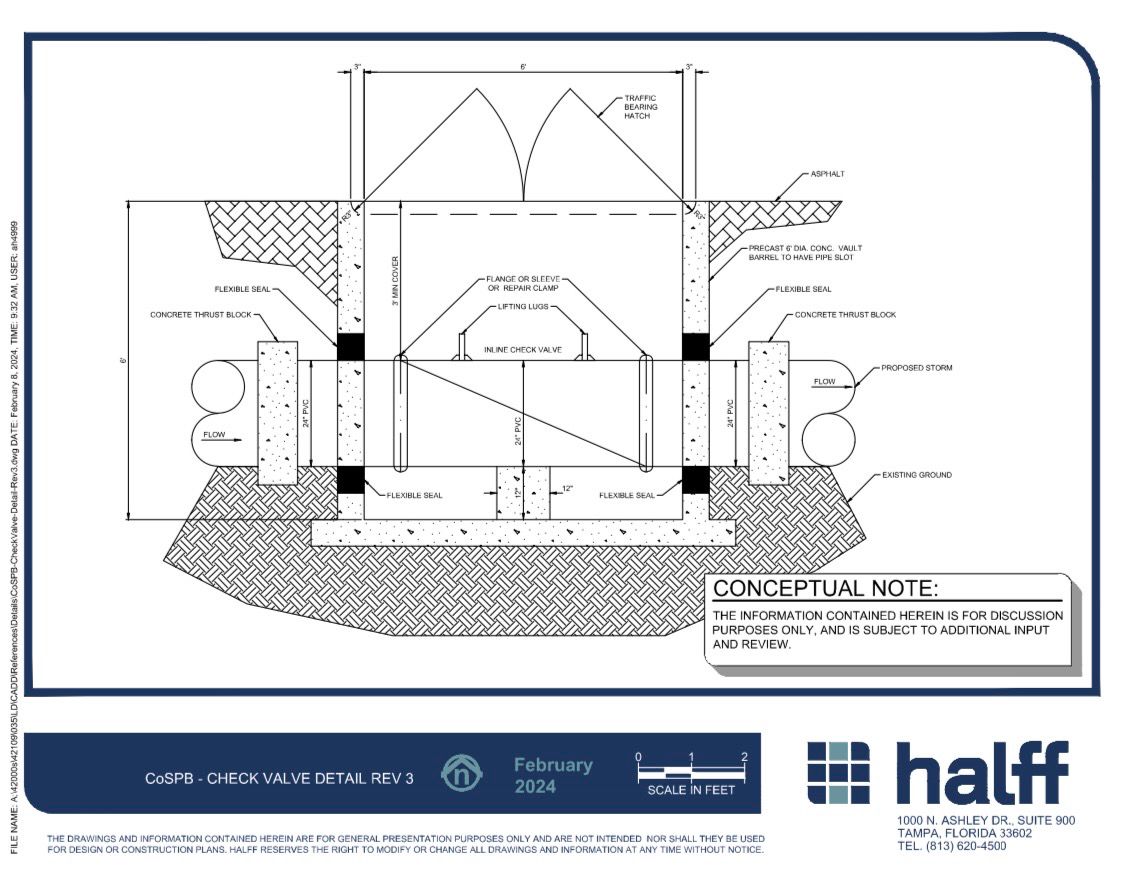ST. PETE BEACH, Fla. — St. Pete Beach Public Works Director Mike Clarke said he came up with a new tide check valve design which allows debris to be easily cleaned out and prevents marine growth from clogging the sunny day flooding mitigation device.
“We’re doing that as a learning organization,” he said. “We’re sharing our observations with all the other public works directors in the county.”
Residents have complained the current tide check valves installed on the edge of seawalls in the Don CeSar neighborhood don’t work because they get stuck in the open or closed position. Clarke’s design calls for the device to be installed under the street, in a baffle box cradle, with quick disconnections which allow maintenance workers to easily clean it out.
“They’ll be able to lift it up onto the street level and be able to maintenance at waist high,” he said. “We’re taking care of the maintenance, we’re taking care of the marine growth and we’re taking care of the debris situation.”
Clarke has partnered with the engineering firm Halff and hopes to have the design complete in about six months. Halff project manager Sydney Luzier believes the new design will become popular with other coastal communities.
“This system allows them to change the check valves out from the convenience of the side of the road,” he said. “Just by hopping out of the truck.”
Clarke said he hopes to begin installation of the new tide check valves in February.

It can’t come soon enough for water logged residents who have been dealing with sea level rise flooding for years and have grown weary of Clarke’s management. Last month, 40 people sent emails and more than a dozen showed up at a city commission meeting to complain about endless studies and not enough action.
Clarke said he welcomes being pressed and applauds residents for bringing their concerns to elected leaders.
“It’s getting to the point where it’s becoming less tolerable or intolerable and the elected officials are listening,” he said. “I am absolutely paying attention and I’m listening too.”
The public works director said he wants to double his stormwater workers from two to four. He also wants to add more workers in sanitary sewer and street maintenance.
Clarke said the ultimate solution to the flooding problems is to install pump stations, while at the same time, raising all the seawalls to five feet.
“We have somewhere around 3,000 privately owned seawalls… All of the neighbors have to come to the same conclusion pretty much at the same time,” he said. “If we have this parallel effort coming out on the other side of this thing (then) three, four, five years from now we could be looking pretty good.”
In the meantime, Clarke will be asking the city commission to approve funding the installation of his new tide flex valves, constructing new outfalls, building a temporary seawall at 36th Avenue for protection from 2024 hurricanes and designing a stormwater pump station for the Don CeSar neighborhood.
“At the year 2100, if the science of the worst case scenario or even the medium case scenario plays out,” he said. “Unless we do something beginning now then three-quarters to 80 percent of the island will be under water.”



